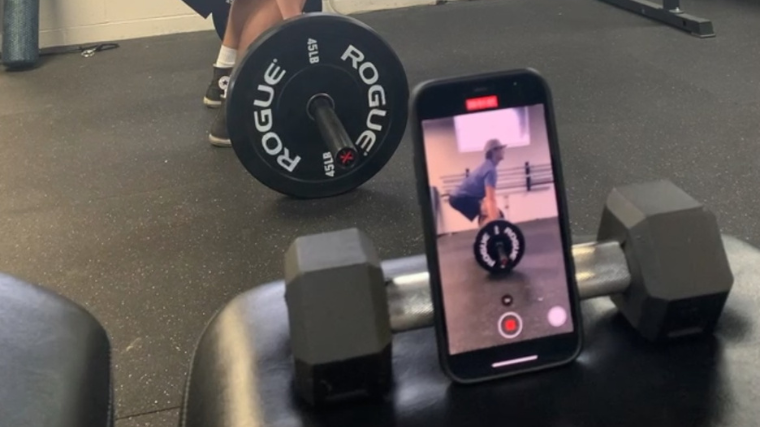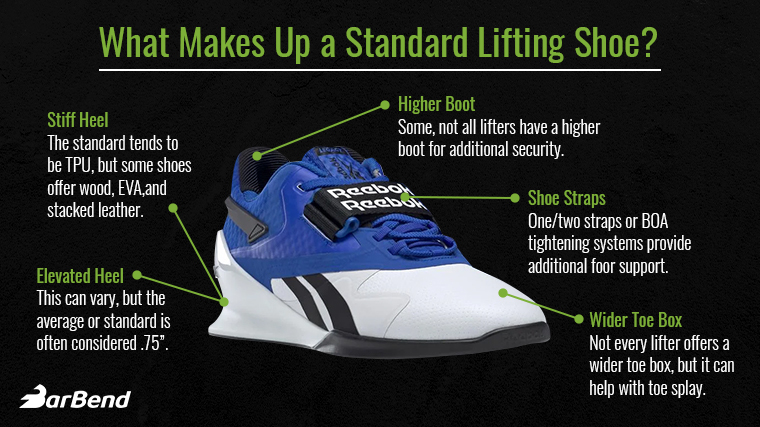Congratulations are in order; you found your way to weightlifting. Whether by seeing someone slam and stomp in your local gym or by scrolling through your Explore feed, your eyes fell upon someone performing the snatch or clean & jerk.
Maybe you were entranced from the get-go, or perhaps you’re cautiously curious at best. Regardless, you’ve committed to picking up the barbell and (if all goes well), hurling it overhead in the blink of an eye.

Weightlifting is hard to learn and even harder to master. If you want to get the most out of your first foray into the sport, keep these eight tips at the front of your mind while you’re lacing up your lifting shoes.
First Weightlifting Workout Tips
- Get Motivated
- Manage Your Expectations
- Eat Something Beforehand
- Prioritize Consistency
- Film Yourself
- Listen to Your Coach
- Stretch Before (and After)
- Take a Small Win
Editor’s Note: The content on BarBend is meant to be informative in nature, but it should not be taken as medical advice. When starting a new training regimen and/or diet, it is always a good idea to consult with a trusted medical professional. We are not a medical resource. The opinions and articles on this site are not intended for use as diagnosis, prevention, and/or treatment of health problems. They are not substitutes for consulting a qualified medical professional.
Get Motivated
One of the best ways to learn a new skill — which is exactly how you should view your first go at Olympic lifting — is to amp yourself up about the learning process itself.
Trying something new in the gym can definitely be intimidating, especially if that thing is an exercise you’ve never done before or a machine you’ve never used. That said, you should think of it as an opportunity instead of a chore.
Alternatively, watching successful weightlifters in action can certainly generate hype as well. Weightlifting is fluid, acrobatic, and impressive all at once. The journey may be long, but you’re going to get there.
In fact, research on learning behaviors and skill acquisition backs the idea that if you’re motivated to excel at a new task, you’re more likely to manifest the result you’re after. (1)
Manage Your Expectations
Make no mistake, weightlifting is among the most challenging strength sports out there from a technical perspective. Consistently moving well in the snatch and clean & jerk takes years to learn; even internationally-competitive lifters spend plenty of time during their training drilling and reinforcing their form.
As such, you should head into your first workout with reasonable expectations of what you’ll achieve. It’s extremely unlikely that you’ll nail down every aspect of the snatch in your first session.
Managing your expectations is essential to leaving the workout feeling proud and satisfied instead of disheartened that you didn’t figure it all out the first time.
Eat Something Beforehand
There’s nothing wrong with lifting on an empty stomach, especially if you’re used to exercising in a fasted state. However, if that’s not the case for you, you should definitely try to get something in your belly before you start your weightlifting practice.
Sensations like hunger can impair your ability to focus and maintain attentiveness when working on a task. (2) More practically, weightlifting practice can take quite a bit of time.

Between warming up, mobilizing, and working through long-duration drills, it’s pretty easy to spend upwards of 90 minutes on a technique session. A rumbling stomach should be the last thing distracting you from working on your pull.
Prioritize Consistency
It’s quite common for your first weightlifting session to feel bumpy and uneven. Not only are the snatch and clean & jerk distinct from how you perform other forms of resistance training, they’re also fairly different from each other.
The early stages of motor learning are regarded as that of “unconscious incompetence”; you don’t know what you don’t know (or what you’re doing wrong). (3) Your movement also tends to feel rigid and sensitive, rather than fluid and organic.
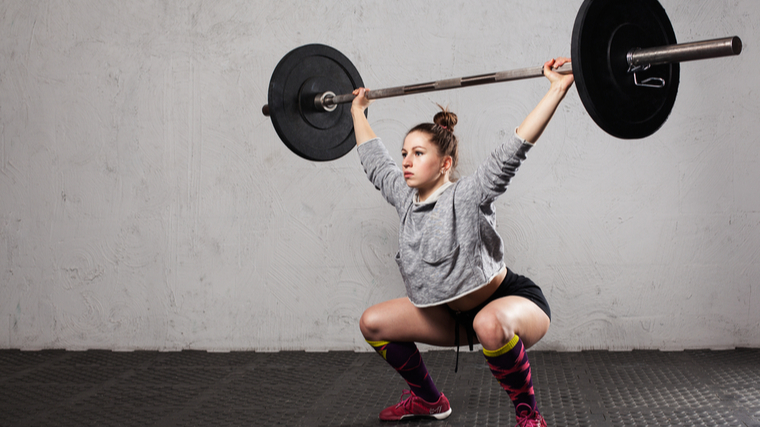
As such, your primary focus during your first session should be consistency, rather than mastery. You can’t rush your technique; but you can try to make each rep as similar as possible to the one before it.
That doesn’t mean you shouldn’t try to make corrections and improve your form. Having a consistent, reliable “baseline” of technique can help you remember where you left off when you return to the gym again, as well as making your coach’s job a bit easier.
Film Yourself
It’s an extremely common practice among weightlifters to record their workouts on a regular basis. This isn’t just something performative for social media, either.
Filming yourself lifting, especially if you don’t have an in-person coach, provides valuable information about your movement and technique. This is especially true for rank beginners who, more often than not, have a hard time feeling and identifying their own errors.
If you can physically see yourself working on your snatch technique, you’re more likely to learn a bit quicker the next time you pick up your barbell. This phenomenon, called “knowledge of performance,” has been observed in scientific literature as a meaningful contributing factor to motor skill acquisition. (4)
So, don’t be afraid to break out your camera phone and — while being considerate of others in your vicinity — shoot yourself performing a couple of reps during your workout.
Listen to Your Coach
It’s a no-brainer, but it’s worth mentioning. Recruiting a qualified coach to learn weightlifting is, bar none, the best decision you can make — if you listen to them.
Certified weightlifting coaches spend many, many hours learning how to effectively teach the ins and outs of the sport to newcomers. Weightlifting is a personalized sport, so each coach is likely to take their own approach to its instruction.
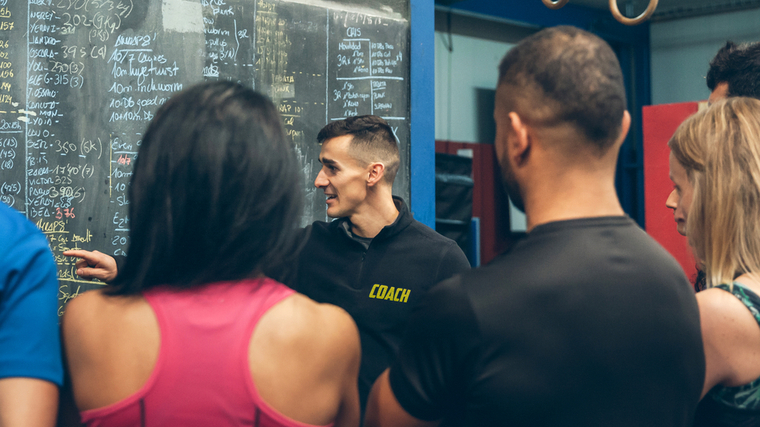
Some may have silly or unorthodox techniques. The very basics of the snatch or clean may also feel unnecessarily rudimentary. But there’s a very good chance that your coach’s methods have been time-tested and can produce a result greater than the sum of their parts.
In fairness, you should also conduct some due diligence to ensure that your coach is reputable and maintains legitimate credentials. The governing federations for the sport (regardless of country) typically maintain up-to-date registries of all currently-certified coaches.
Stretch Before (and After)
Stretching is one of the most contentious topics in sports medicine. Some studies back pre-exercise stretching as a viable method of increasing flexibility and readiness, while others make less charitable claims. (5)
Regardless, both static and dynamic stretching are a great way to create some low-threshold exposure to extreme ranges of motion.
Weightlifting demands a lot of end-range flexibility in your joints (particularly the hips and shoulders), so it might be a good idea to expose those tissues to a similar sensation with some stretching before you start.
Note that this isn’t necessarily guaranteed to make you more flexible long-term, nor is stretching confirmed to prevent injury in all cases. Rest assured, though, that you’ll be spending a lot of time hinged over at the tips or with your arm extended above your head while you learn the Olympic lifts. The last thing you’ll want on your mind are tight hamstrings or prickly lats.
Take a Small Win
You shouldn’t view your first day on the weightlifting platform through a binary lens — it’s not a challenge you’ve undertaken that you can succeed or fail at. It’s important to walk away from your first session with your head high, proud of what you’ve accomplished.
So, at the end of the day, take a moment to capture a small mental win. It could be sitting into the depths of a proper overhead squat. Moving your feet quickly and finally hearing the satisfying crack of your shoes striking the platform. Feeling the bar move weightlessly through the air.
A positive outlook — coupled with equally supportive self-talk — can help you retain information you’ve already learned as well as motivate you to return for another session ready to go. (6)
What to Bring to Your First Weightlifting Workout
Despite how it may appear, weightlifting isn’t a particularly equipment-dependent sport. Sure, lifters gear up in all manner of sleeve, brace, or wrap. For most athletes in most cases, what you lift with boils down to personal preference.
There are only a couple of legitimate essentials (other than a good barbell, of course). Here’s what you’ll absolutely need by your side, as well as a few other options that might help you during your first workout.
Weightlifting Shoes
A pair of weightlifting shoes are to the sport of weightlifting as cleats are to soccer, or bowling shoes for hitting the lane. Weightlifting shoes are specifically designed to bolster both safety and performance, and are functionally mandatory if you want to learn the sport.
There are two specific features of a weightlifting shoe that make it non-negotiable; the raised heel wedge and the stable, compressed sole. The elevated heel adjusts your posture and allows you to squat with a more upright torso, which is crucial for balancing a weight overhead. Similarly, the sturdy construction of the sole helps you generate force and lift without feeling wobbly or unstable.
You can technically practice weightlifting in any footwear (or even barefoot), but the difference between wearing proper shoes and lifting in sneakers or cross-trainers is beyond night and day.
Knee Sleeves
Knee support is among the most common lifting equipment utilized by weightlifters. While knee sleeves or wraps aren’t guaranteed to shield your knees from all aches or pains, they can certainly provide mental comfort and some physical warmth to the joint.
This may not be necessary during your first workout; after all, there’s a good chance you’ll only work with the empty barbell itself.
However, if you’re not used to high-velocity movement, don’t do plyometrics, or simply don’t have much experience squatting, a pair of knee sleeves might be worth bringing along.
Wrist Wraps
Your wrists can take quite a beating during weightlifting practice. Not only do they have to support the barbell every time it goes overhead, but the front rack posture of the clean also puts the joint into an extreme range of motion.
Note that this isn’t inherently bad for your wrists in any capacity. That said, you may not be used to loading your wrist while your hand is bent backward significantly, which can be uncomfortable.
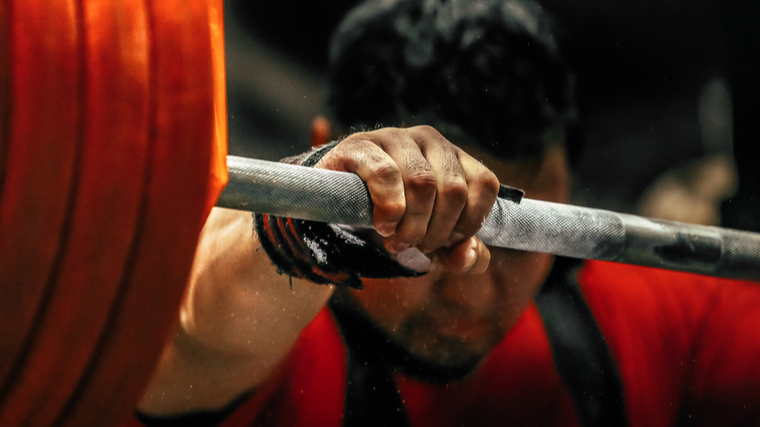
Wrist support via a pair of wraps can help alleviate some of the temporary discomfort, but they may also impede your range of motion, so you’ll have to decide for yourself if they’re worth putting on.
Lifting Chalk
Lifters of all shapes and sizes utilize chalk to help them maintain a snug and secure grip on the barbell. You’ll very regularly see chalk employed by strength athletes like powerlifters during the deadlift or CrossFitters chaining together a series of pull-ups.
The same principle applies to the snatch and clean & jerk. Sweaty or slippery hands can affect your ability to properly hook grip the barbell. A loose or unsecure grip isn’t only a safety hazard, it’s a performance deterrent. You’ll find it difficult to quickly launch a snatch overhead if you can barely hang on to it in the first place.
Tight Clothing
Weightlifters don’t compete in spandex for fun. A weightlifting singlet (sometimes called a suit) is designed to be skin-tight so there’s nothing in the way of the barbell as it flies through the air.
Not only does the barbell move rapidly through space; you do as well, every time you drop underneath it. The last thing you’ll want is a baggy shirt flying up over your face, or the bar dragging along the fabric of your pants.
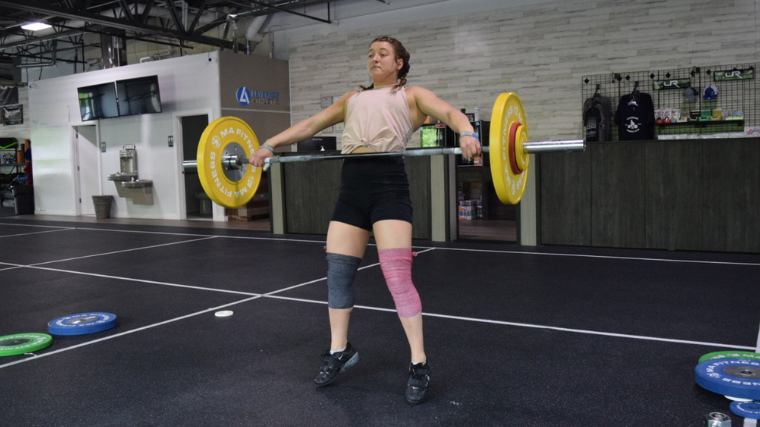
It’s far from mandatory, but you’ll generally want to practice the Olympic lifts in snug, form-fitting clothing. Athletic apparel often tends to be more durable as well — the aggressive knurling of a weightlifting bar can easily damage delicate fabrics.
How Weightlifting Works
If you’ve been exposed to Olympic lifting in your local gym or through a platform like YouTube, you may not grasp the ins and outs of it all right away. Weightlifting is practiced by collegiate athletes and professional CrossFitters alike, but it’s also a fully-fledged sport all its own.
Professional weightlifters train and compete internationally through competitions hosted by the sport’s central governing body, the International Weightlifting Federation (IWF). Each member state of the IWF also has its own national federation; in the United States for example, the sport is overseen by USA Weightlifting (USAW).
Weightlifters who wish to formally compete in sanctioned events must register with their federation. This holds true for all competitions (known as meets) both locally and internationally. Weightlifting competitions range from small, single-day events held in local gyms all the way up to the Olympic Games themselves.
Regardless of how many athletes compete, where the meet is held, or who oversees it, all Olympic lifters partake in their sport under the same parameters; they have six total attempts (three for each movement) to lift the heaviest weight possible in the snatch and clean & jerk.
Moving Forward
Weightlifting is a lot of fun. It mixes the muscular and strength-based stimulation of resistance training with the grace and acrobatics of gymnastics. That combination of brute force and sleek skill makes the sport equal parts addicting and frustrating.
If you’ve committed to trying it out for yourself, keep these nine tips in mind. The first time you feel yourself effortlessly fly through the air during a snatch is nothing less than exhilarating; you just might find yourself hook (gripped) on the sport before you know it.
References
1. van der Kooij, K., In ‘t Veld, L., & Hennink, T. (2021). Motivation as a function of success frequency. Motivation and emotion, 45(6), 759–768.
2. Mohanty, A., Gitelman, D. R., Small, D. M., & Mesulam, M. M. (2008). The spatial attention network interacts with limbic and monoaminergic systems to modulate motivation-induced attention shifts. Cerebral cortex (New York, N.Y. : 1991), 18(11), 2604–2613.
3. Weaver J. (2015). Motor Learning Unfolds over Different Timescales in Distinct Neural Systems. PLoS biology, 13(12), e1002313.
4. Sharma, D. A., Chevidikunnan, M. F., Khan, F. R., & Gaowgzeh, R. A. (2016). Effectiveness of knowledge of result and knowledge of performance in the learning of a skilled motor activity by healthy young adults. Journal of physical therapy science, 28(5), 1482–1486.
5. Page P. (2012). Current concepts in muscle stretching for exercise and rehabilitation. International journal of sports physical therapy, 7(1), 109–119.
6. Tod, D., Hardy, J., & Oliver, E. (2011). Effects of self-talk: a systematic review. Journal of sport & exercise psychology, 33(5), 666–687.
Featured Image: Photology1971 / Shutterstock
